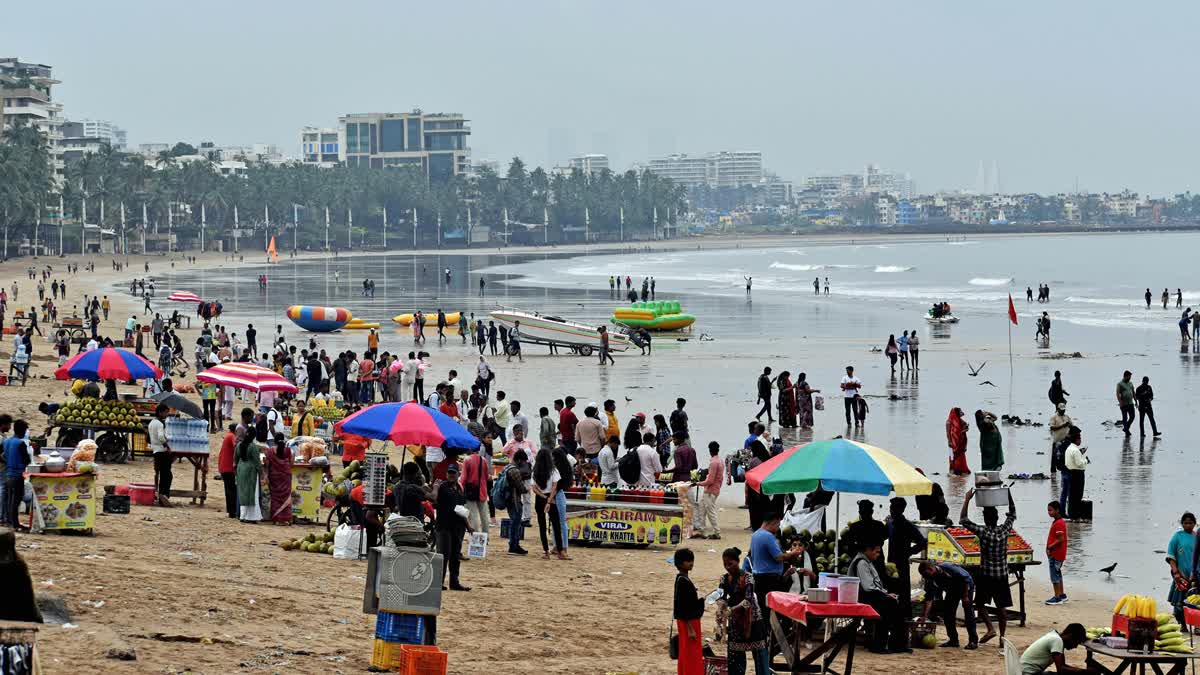New Delhi: India is facing an unseasonal heatwave, with the temperature in Mumbai reaching a five-year high of 38.4°C on February 25, leading the India Meteorological Department (IMD) to declare a yellow heatwave warning for the city and its vicinity. In contrast, northern India, including Jammu and Kashmir and Himachal Pradesh, has been covered with fresh snowfall, giving a contrasting picture of weather in the country.
Mumbai’s Hottest February In Five Years
According to IMD, Mumbai’s temperature on February 25 was recorded at 38.4°C, a staggering 6.4 degrees above normal at the Santacruz Observatory. This marks the highest February temperature since 2020 when the city last hit this mark on February 28. The all-time record for February remains 39.6°C, observed on February 25, 1966.
Meteorological expert Dr. Naresh described the unexpected heat, saying, "There is always local variability. Normally, when March comes, temperatures begin to rise in Maharashtra and other southern parts such as South Odisha and South Gujarat. These regions feel heatwaves first. In April, Central India also gets hit, and in May, North and Central India fall under heatwave conditions."
The IMD has forecast no relief for Mumbai in the coming two days, with temperatures expected to hover around 37–38°C. Heatwave warning has also been issued for Thane, Raigad, and Ratnagiri.
Why Is Mumbai Heating Up?
There are a number of meteorological reasons behind the growing temperature of Mumbai:
- Delayed Sea Breeze: It is usually the case in Mumbai that its location on the coast ensures the arrival of a cooling sea breeze. This time, due to a delay in its arrival, there is over-heating.
- Strong Easterly Winds: These Easterly winds are bringing dry, hot air from the interior, inhibiting the normal cooling effect.
- Mid-Level Anticyclone: This type of weather does not allow air to rise, so heat remains near the ground.
Dr. Naresh explained that the wind pattern along the west coast of Mumbai is consistent. “Normally, when a sea breeze comes, it stops the excessive rise in temperature. But this year, with continuous easterly winds, Mumbai, Coastal Karnataka, and North Kerala are facing heatwave conditions," he explained.
Impact Of Heatwave
The intense heat brings various threats to public health and day-to-day life:
- Health Hazards: High temperatures raise the risk of heatstroke, dehydration, and heat exhaustion.
- Agricultural Impact: Unseasonal heat can adversely impact agriculture, lowering yields and affecting food security.
- Enhanced Energy Demand: The over-heating has caused high electricity demand as inhabitants are more dependent on cooling systems, which put a strain on power supplies.
Manu Singh, an environmental specialist, emphasized the importance of prudence, saying, "While short-term steps such as staying hydrated and staying out of the sun during the hottest part of the day are important, we also need to address the long-term effects of increasing temperatures. Urban planning needs to include more greenery and heat-resistant infrastructure."
Weather Outlook For Other Regions
As Mumbai and surrounding areas grapple with the sweltering heat, much of North India, such as Delhi, Jammu and Kashmir, and Himachal Pradesh, are undergoing opposite weather trends.
Rising Temperatures Of Delhi And Looming Rainfall
On February 26, Delhi recorded its maximum temperature at 27.5°C, two notches higher than average. Nonetheless, a western disturbance will shower scattered light rainfall between February 26 and February 28, providing relief.
